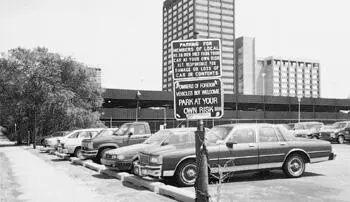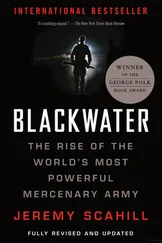Jeremy Clarkson - Motorworld
Здесь есть возможность читать онлайн «Jeremy Clarkson - Motorworld» весь текст электронной книги совершенно бесплатно (целиком полную версию без сокращений). В некоторых случаях можно слушать аудио, скачать через торрент в формате fb2 и присутствует краткое содержание. Город: London, Год выпуска: 2004, ISBN: 2004, Издательство: Penguin, Жанр: Прочая документальная литература, Юмористическая проза, на английском языке. Описание произведения, (предисловие) а так же отзывы посетителей доступны на портале библиотеки ЛибКат.
- Название:Motorworld
- Автор:
- Издательство:Penguin
- Жанр:
- Год:2004
- Город:London
- ISBN:978–0–141–90136–7
- Рейтинг книги:5 / 5. Голосов: 1
-
Избранное:Добавить в избранное
- Отзывы:
-
Ваша оценка:
- 100
- 1
- 2
- 3
- 4
- 5
Motorworld: краткое содержание, описание и аннотация
Предлагаем к чтению аннотацию, описание, краткое содержание или предисловие (зависит от того, что написал сам автор книги «Motorworld»). Если вы не нашли необходимую информацию о книге — напишите в комментариях, мы постараемся отыскать её.
Motorworld — читать онлайн бесплатно полную книгу (весь текст) целиком
Ниже представлен текст книги, разбитый по страницам. Система сохранения места последней прочитанной страницы, позволяет с удобством читать онлайн бесплатно книгу «Motorworld», без необходимости каждый раз заново искать на чём Вы остановились. Поставьте закладку, и сможете в любой момент перейти на страницу, на которой закончили чтение.
Интервал:
Закладка:
I was even on the receiving end of some smouldering come-ons when I tooled by on a bicycle which was powered by the motor from a fumigation pump. It wasn’t the bike. It wasn’t my good looks or flowing locks. It was my Visa card they wanted; that and a passport out of the place.
Technically, the girls aren’t prostitutes in the accepted sense. In fact, they’ll go further for less, which proves really how screwed-up the Caribbean’s largest land-mass has become.
I found myself wondering, as I strolled round the museum dedicated to the revolution, if Castro and Guevara could possibly have foreseen that one day their people would be asked, by their government, to eat grass.
In fact, the museum is a hopeless waste of money in a country that doesn’t have any. Inside a large glass tomb, there’s the boat that brought the rebels over to Cuba, and outside, there are other mechanised pieces which have been preserved for all time.
There’s Castro’s Land Rover and a Supermarine fighter. Britain, it seems, has a lot to answer for. There’s also a bulldozer which had been converted into a tank, and various vans which had been used to storm the palace and so on.
But, frankly, none of this matters alongside Arnol Rodríguez, who is a living, breathing relic from those revolutionary days.
Along with eight other commandos, on the eve of the 1958 Cuban Grand Prix, he kidnapped Juan Manuel Fangio, who, at the time, was like Michael Schumacher, Alain Prost and Ayrton Senna all rolled into one.
At gunpoint they bundled him out of the Hotel Lincoln, into one of three waiting cars and took him across town to a rather ordinary two-storey house. Inside were a mother and two daughters, revolutionaries to the core, who led him upstairs and gave him steak and salad.
The race went ahead without Fangio, but even the news that some hotheads had poured oil on the track, causing one car to kill six spectators, didn’t take the kidnapping off the front page.
The world’s media was focused on this tiny island which had become known, though only dimly in Europe, as a sort of Monaco for Americans.
It was a dream come true for Arnol and his merry gang, but even better news was just around the corner because when Fangio was released, he told waiting newsmen that he had been treated well and that he sympathised with the cause of the rebels.
Amazingly, the great racer stayed in touch with Arnol until the day he died. The kidnapper and the kidnappee became buddies. Weird, hey?
It was certainly very weird to be sitting in the bedroom where Fangio was held, talking to Arnol and knowing that he’d gone on to be Cuba’s deputy minister for foreign affairs. I found myself wondering how Terry Waite would feel if one of his abductors were to be seen on TV every night meeting world statesmen like Clinton and Chirac and Gerry Adams.
I didn’t exactly worry about it though, because I was beginning to formulate a plan. Whenever I visit a place, I like to bring some permanent reminder home and I was being thwarted at every turn in Havana.
There is almost nothing in the shops, apart from cigars, which I don’t like, and shoddy Che Guevara T-shirts. I bought a photocopy of Che’s resignation letter to Fidel and even procured a bank note from 1960 signed by beardy himself.
But I wanted something bigger… like a car.
The streets really are chock-full of ageing classics which would, with a bit of attention, fetch all sorts of silly prices in the land of MTV.
I’m told that in the current climate, it’s hard as hell to get them out but not impossible, and that was good enough. I mean, I’d just seen an Aston Martin DB4 slide by, and I wanted it.
And that Cadillac over there. And the gullwing Mercedes in that barn. And that Porsche speedster. No kidding, you don’t have to hunt for cars like this. They’re everywhere.
There was even a Maserati which, said its owner, was one of only two ever made. He didn’t know what model it was, and the ravages of time had removed most of the clues, so I wasn’t sure whether he was bluffing or not.
This car was a bare shell. It had no engine, no interior trim, no seats, no lights, nothing. But he wanted $50,000 for it, arguing that it had once been used by Mrs Batista, wife of the former president.
This was the third car I’d see that day which had once been used by Mrs Batista, but it was not to be the last. I was shown four Jaguars that had belonged to Frank Sinatra and countless old wrecks which had been vomited in by the old drunk himself, Ernest Hemingway.
Si Señor, I know it is a worthless piece of junk that is not even fit for the scrapyard but Ginger Rogers once owned it so I am asking for $100,000.
And they’re not going to give up either, because the haggling has only just begun.
Later, when countless Westerners have told them to get lost, they’ll sell for decent money, but not now.
Che Guevara’s car was different, though. Here was something that, we know, was used by someone famous. And here it was, after nine days of solid slog, emerging from the old town barn and seeing sunlight for the first time in twenty years.
And there, coming from under the bonnet, were flames. It’s strange how one reacts in a situation like this: I did 100 metres in eight seconds as I ran to get the cameraman, so that we could record this momentous event for all time.
Andy, mindful of the budget and how much it would cost us if the damned car burned out completely, behaved rather differently. He dived into a shop, which, miraculously, had some mineral water in the fridge. To the astonishment of the owner, he paid five bucks for one bottle and then poured the contents all over a car which, to the average Cuban, was worth rather less than that.
It worked out quite well in fact. We got some pictures and Andy got the fire out before too much damage was done. The only tragedy was that my drive in this important car was limited to one run down the Malecon seafront.
Communism had wrecked a car. And it has certainly wrecked Cuba, but I guess we were quite lucky really. It never actually got round to wrecking a planet.
Detroit

Way back when, the good people of Detroit decided it would be a good thing to have a railway station. And this was not to be a platform with some geraniums on it either. No siree, you wouldn’t be able to find Bernard Cribbins having a chinwag with Jenny Agutter in the steam here. They wanted something big. Really big.
And that’s what they got: the biggest, flashiest, tallest railway station the world had ever seen. The huge marble cavern of a concourse sat at the bottom of a twelve-storey skyscraper and backed on to no fewer than sixteen platforms.
Unfortunately, Detroit became the car capital of the world and large, free-flowing urban interstates sprang up like mushrooms after a summer shower. They connected the new suburbs with the downtown auto factories and frankly, no one really needed the station any more.
And so, it closed down.
It’s still there, dominating the Detroit skyline, but today it’s smashed and broken. Every slab of marble is cracked, the concourse is littered with burned mattresses and the upper floors are said to be in an even worse state of repair.
But no one is absolutely certain because Detroit’s railway station is at the end of Michigan Avenue and, as such, is at the epicentre of a gang war that measures 9.4 on the Richter scale.
Читать дальшеИнтервал:
Закладка:
Похожие книги на «Motorworld»
Представляем Вашему вниманию похожие книги на «Motorworld» списком для выбора. Мы отобрали схожую по названию и смыслу литературу в надежде предоставить читателям больше вариантов отыскать новые, интересные, ещё непрочитанные произведения.
Обсуждение, отзывы о книге «Motorworld» и просто собственные мнения читателей. Оставьте ваши комментарии, напишите, что Вы думаете о произведении, его смысле или главных героях. Укажите что конкретно понравилось, а что нет, и почему Вы так считаете.












